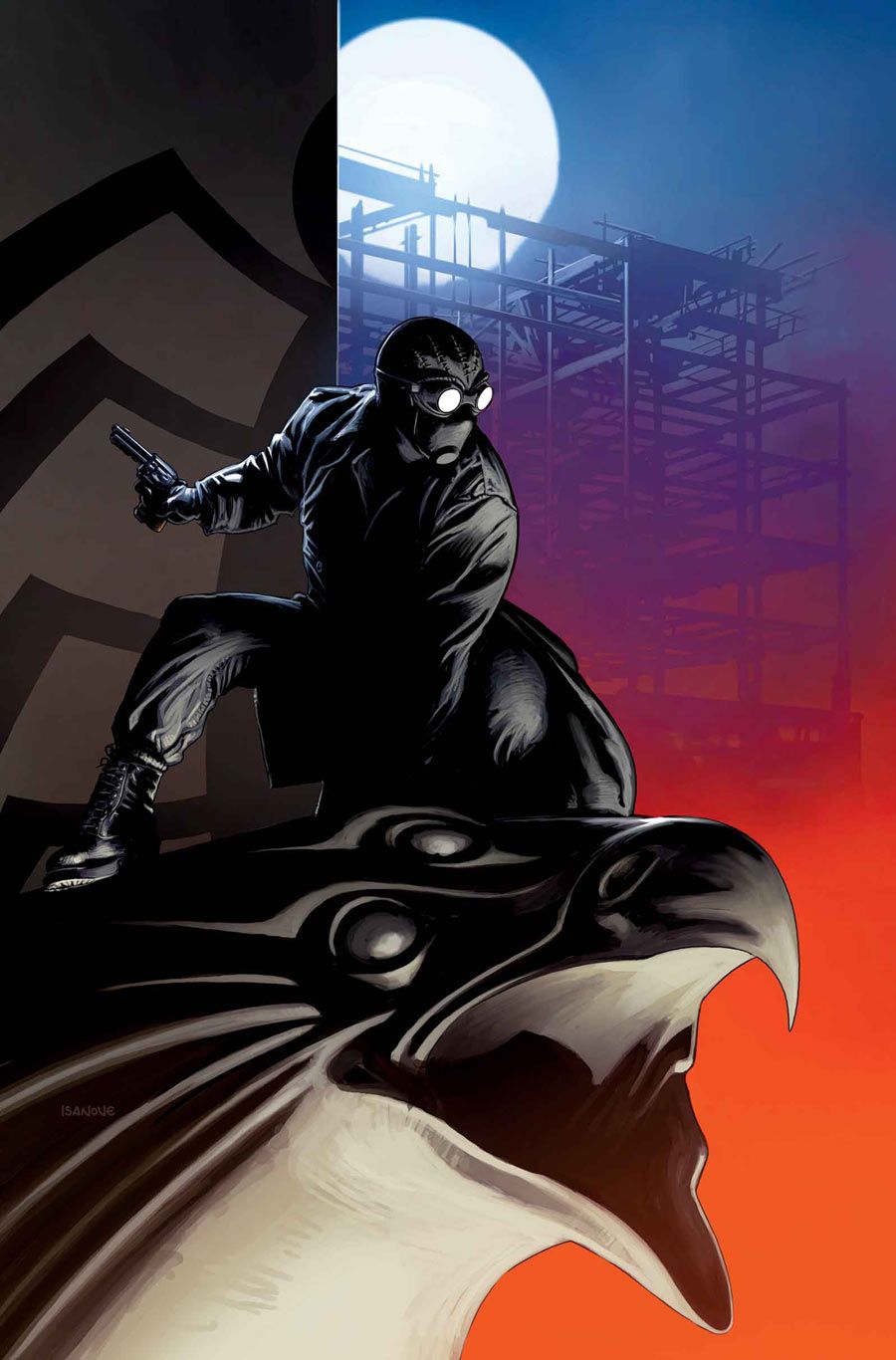David Hine and Fabrice Sapolsky return to the 1930s to check in on the noir version of Spider-Man in "Edge of Spider-Verse" #1. If nothing else, "Spider-Verse" appears primed to revisit some fan favorite incarnations of the webslinger, including Spider-Man Noir. Richard Isanove joins the writers for this issue and brings along plenty of deep, dark inks.
Skipping forward a few years from the "Spider-Man: Noir" miniseries from a few years back, this self-contained comic gives readers everything they need to know about Spider-Man Noir. With a backdrop of the 1939 World's Fair, Hine and Sapolsky give readers a story that is only marginally not a main universe Spider-Man tale. Among the alterations, Mysterio is a bitter stage magician bent on getting Spider-Man's blood for his own devilish purposes. In keeping things parallel, or closer to duplicative, Wilson Fisk, and other thugs such as Ox and Handsome Dan, don't stray too far from their original incarnations.
The creative crew of "Edge of Spider-Verse" #1 doesn't have the luxury to extend their visit or flesh out 1939 on this Earth, which makes this tale less dependent on the era and characters and more reliant on the plot to move forward and open the door to "Spider-Verse." Isanove isn't afforded the time or space to decorate this comic in lavish 1930s styles, as Peter, MJ and Aunt May are wearing outfits that are rather time period-agnostic. The story itself isn't hindered by this, but small finesse details like that would make the story a bit more compelling. Isanove's characters are recognizable and sharp, somewhat rigid, but distinct throughout this issue. While Mysterio is presented as a stage magician, Isanove finds a way to make reference to the common perception of Mysterio in a way that offers a little visual wink and nod to sharp-eyed readers.
By the end of the issue, the creative team has accomplished their two-pronged goal: introduce readers to one of the variant Spider-People set to swing through the pages of the "Spider-Verse" story and open the door to "Spider-Verse." It's not remarkable, flashy, nor particularly memorable, but it gets the job done. Spider-Man Noir is one of the more visually distinct Spider-Folk, and it helps to provide a backstory as this issue does. "Edge of Spider-Verse" #1 is not a particularly memorable read, but it does move along nicely. As the second of ten comic books listed on the "Edge of Spider-Verse" checklist, it gives readers a chance to sample portions of the Spider-Verse that may be more appealing without locking them in to a long-term, slow-moving story. This series is set to be a quintet of one-shots, and by choosing to devote an entire issue to each character's backstory Marvel has put the onus on the readers to ingest only as much as they want to.

